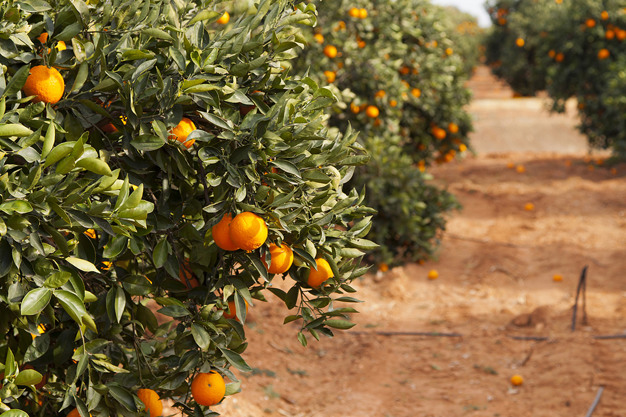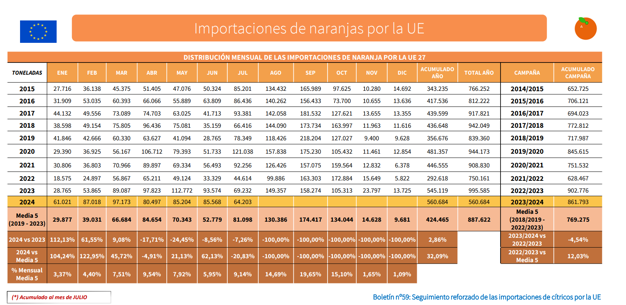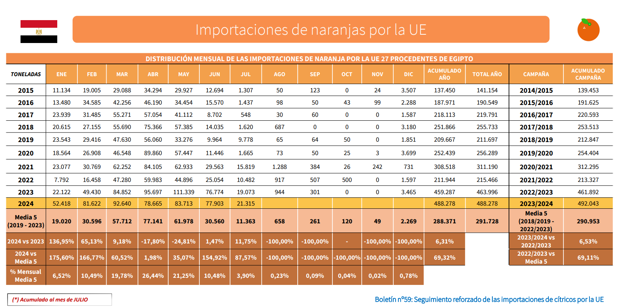The latest monitoring report on citrus imports from third countries published by the Spanish Ministry of Agriculture, Fisheries and Food (MAPA) has revealed the latest information on the orange volumes purchased in the EU, with data up to the month of July.
A total of 861,793 tons would have been imported during the 2023/24 season (September 2023 to July 2024), which is 4.5% (-41,000 t) less than in the same period of the 2022/23 season, and 12% (+92,500 t) more than the average.
Egypt remains ahead of South Africa as the largest supplier with one month to go before the end of the season. "South Africa's total share of the volume has apparently dropped by 9.5%, down to 31%, while Egypt is up by 19% and has reached a 57.1% share compared to last season. South Africa's volume is down by 22.2% (-76,350 t) compared to last season and by 14.3% (-44,700 t) compared to the 5-year average. Egypt has grown by 6.5% (+33,150 t) compared to the same period last season and by 69.1% (+201,100 t) compared to the average."
As for other Southern Hemisphere countries, "Zimbabwe (3% share), stands below average (-4.8%, -1,300 t), and Argentina has also fallen (-45.4%, -10,400 t). Morocco has also recorded an 89.3% drop (-41,500 t) compared to the average. It has lost 5.5 percentage points and been overtaken by the two previous countries."
 © Eduardo Gonzalez Diaz | Dreamstime
© Eduardo Gonzalez Diaz | Dreamstime
It is worth noting that, while in the first two months of the season, there was a reduction of the volumes imported, both compared to the same period last year and to the average, in the following months they have remained above average, "except in April and July, when they have fell by 5% and 21%, respectively."
"In the year 2024 (January-July), the EU-27 would have imported a total of 560,684 tons, which entails a 2.9% increase (+15,600 t) compared to the same period in 2023, and is 32.1% (+136,200 t) above average."
"This rise is mainly due to the increase in imports from Egypt, as other countries have recorded significant drops compared to the average values," says the report. In fact, according to the data, Egypt has had an increase of 6.3% (+29,000 t) compared to last year (when figures were already high), and of 69.3% (+199,900 t) compared to the average, accounting for 87.1% of the total supplied by third countries, and "increasing its market share by 19 points."
As far as importing countries are concerned, the Netherlands has once again been the biggest buyer of Egyptian oranges, with a share of almost 45%. It is followed by Spain, which up to June (the last month with data segmented by country) accounted for around 18% of all purchases, after reducing its purchases by 7.2% year-on-year, and France, which this year has once again increased its imports of Egyptian oranges and accounts for 6.6% of all imports, according to data provided by the European Commission.
Italy ranks fourth, clearly breaking away from the trend of the biggest buyers, as its purchases have fallen by almost 24% compared to last season and its share stood at 6.3% up to June.
Slovenia, another country with ports on the Adriatic, ranks fifth, with 6.0%.
You can consult the full report, with information for all citrus fruits, at the following link.



